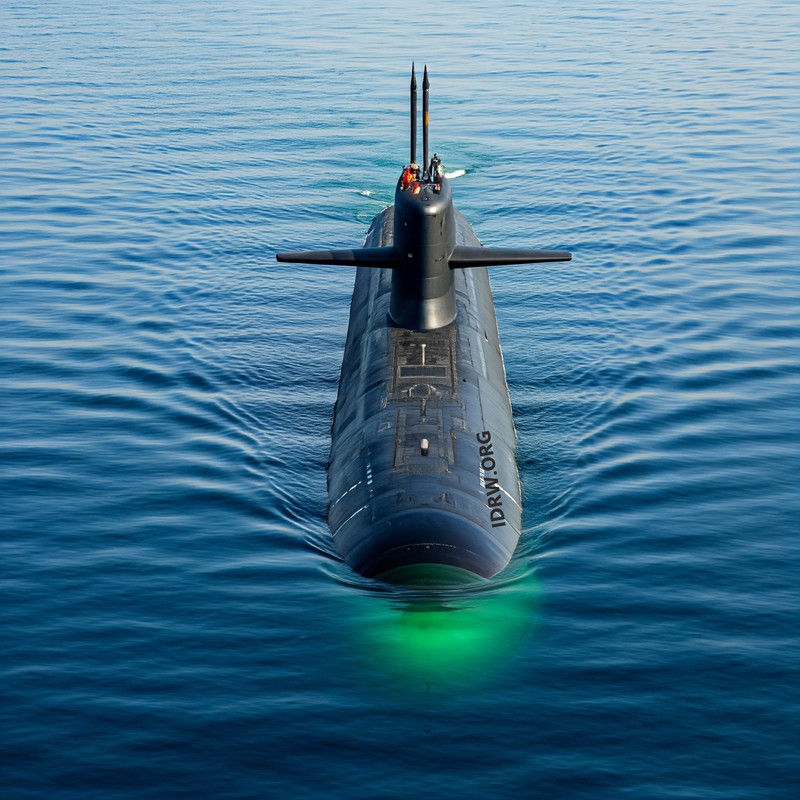SOURCE: RAUNAK KUNDE / NEWS BEAT / IDRW.ORG


India’s nuclear attack submarine program recently received Cabinet Committee on Security (CCS) approval for the construction of two nuclear-powered attack submarines (SSNs), a critical step forward in strengthening India’s maritime defence capabilities. New details, as reported by the Times of India (TOI), suggest that these submarines will have a displacement of nearly 10,000 tons, significantly larger than previously speculated figures of 6,000-7,000 tons.
The increased displacement of India’s nuclear attack submarines places them in the same league as the American Virginia-class submarines, specifically the SSN-774 Block V variant, which displaces around 10,200 tons. This would make India’s SSNs comparable to some of the most advanced nuclear attack submarines (SSNs) in the world in terms of size and potential capability.
When compared to China’s Type 093 Shang-class nuclear-powered attack submarines, India’s SSNs are notably larger. The Type 093 SSNs have a displacement of around 6,400 tons, making India’s upcoming nuclear submarines 40% bigger. This increased size not only suggests enhanced capabilities in terms of endurance and firepower but also positions India to maintain naval superiority in the increasingly competitive waters of the Indian Ocean Region (IOR).
One of the key aspects of India’s nuclear attack submarine program is its Vertical Payload Tubes (VPTs). While specific details about the number of VPTs are yet to be confirmed, it is likely that these submarines will carry a range of advanced weapon systems.
Each VPT could potentially house 4-6 subsonic cruise missiles (such as the Nirbhay), Or, 1 hypersonic cruise missile, such as Project Vishnu HCM or BrahMos-2K. The capability to carry hypersonic cruise missiles would be a critical advantage, as these weapons provide rapid strike capabilities with speeds exceeding Mach 5, making them extremely difficult to intercept. This would give India an edge in both strategic deterrence and first-strike capabilities.
In addition to cruise missiles, the nuclear submarines will also be armed with heavyweight torpedoes for anti-ship and anti-submarine warfare, making them a formidable underwater platform capable of neutralizing both surface and subsurface threats.
India’s new SSNs will likely feature advanced acoustic stealth technologies to reduce their sonar signature, making them difficult to detect. Stealth is a critical feature in modern submarine warfare, as it enables the submarine to approach enemy ships and installations without being detected, thus enhancing their first-strike capability.
China’s growing naval presence in the IOR, exemplified by its Type 093 Shang-class SSNs and increasing deployments of nuclear submarines in the region, has raised concerns in India. By developing larger, more capable SSNs, India is positioning itself to counterbalance Chinese influence and ensure its dominance in regional waters.
With the successful development and induction of these 10,000-ton nuclear attack submarines, India is setting tone for the development of 13000-ton S5 Class nuclear-powered ballistic missile submarine that it plans to develop after S4 and S4* (Star) SSBNs that has displacement of 7000-tons. Both SSN and S5 SSBN program will be powered by 190 MW Pressurized water reactors (PWR) along with that it will feature new Pump-jet propulsion.
NOTE : Article cannot be reproduced without written permission of idrw.org in any form even for YouTube Videos to avoid Copy right strikes. Websites doing illegal reproductions will get DMCA and Legal Notices.